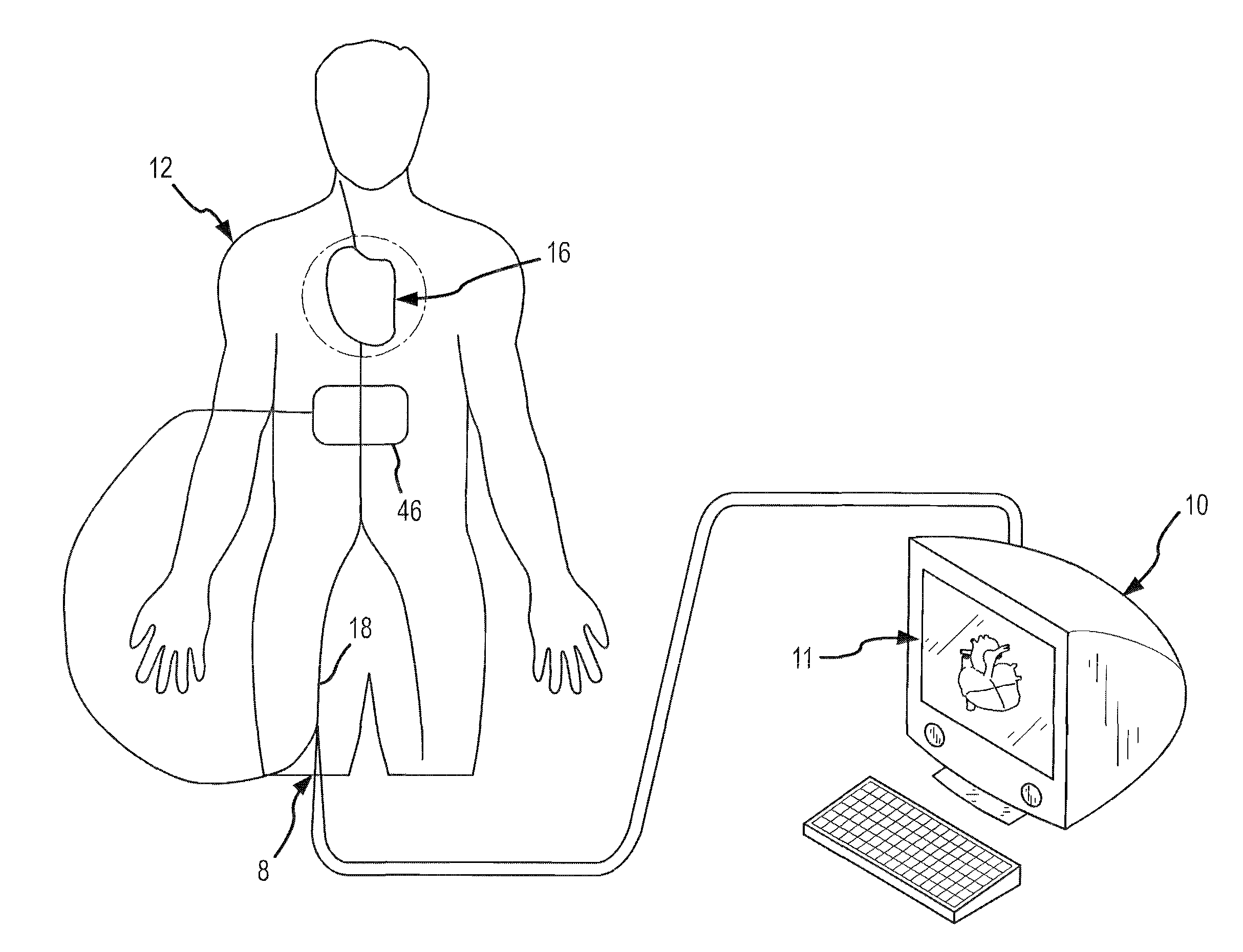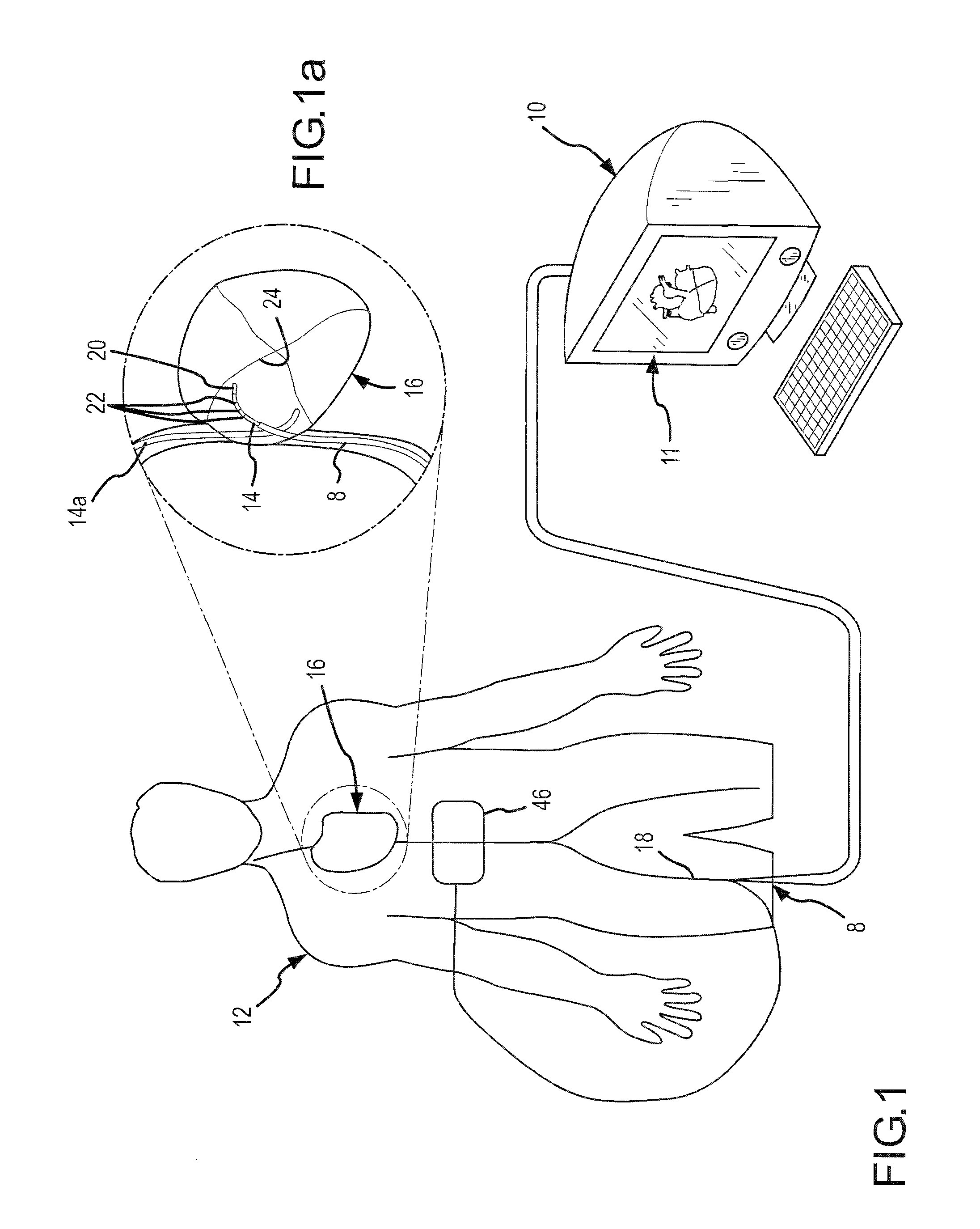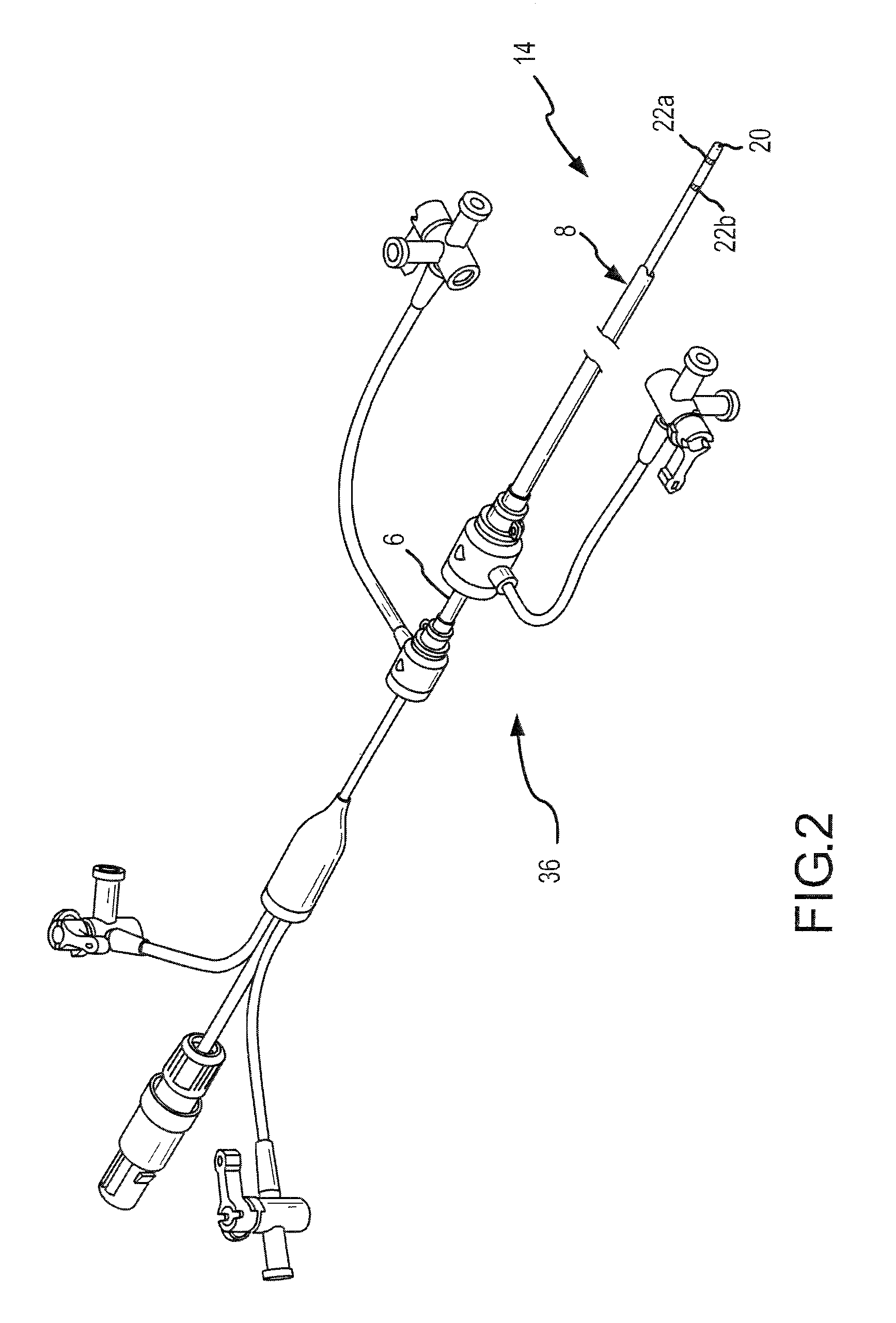Contact sensor and sheath exit sensor
a technology of contact sensor and exit sensor, which is applied in the field of electrode catheters, can solve the problems of difficult precise positioning of ablation catheters, difficulty in ensuring adequate tissue contact of ablation electrodes, so as to achieve improved contact sensing
- Summary
- Abstract
- Description
- Claims
- Application Information
AI Technical Summary
Benefits of technology
Problems solved by technology
Method used
Image
Examples
Embodiment Construction
[0031]FIG. 1 is a diagrammatic illustration of an exemplary electrode catheter system 10 which may be implemented to assess and map internal patient tissue. Further, the system is operative to assess electrode-tissue contact to assist in performance of a tissue ablation procedure for a patient 12. Catheter system 10 may include a guiding introducer having a sheath 8, which may be inserted into the patient 12. The sheath 8 may provide a lumen for the introduction of a catheter 14 which may be disposed beyond the distal insertion end of the sheath 8, e.g., for forming ablative lesions inside the patient's heart 16. During an exemplary ablation procedure, a user (e.g., the patient's physician or a technician) may insert the sheath of a guiding introducer into one of the patient's blood vessels 18, e.g., through the leg (as shown in FIG. 1) or the patient's neck. The user, guided by a real-time fluoroscopy imaging device (not shown), moves the sheath 8 into the patient's heart 16 (as sh...
PUM
 Login to View More
Login to View More Abstract
Description
Claims
Application Information
 Login to View More
Login to View More - R&D
- Intellectual Property
- Life Sciences
- Materials
- Tech Scout
- Unparalleled Data Quality
- Higher Quality Content
- 60% Fewer Hallucinations
Browse by: Latest US Patents, China's latest patents, Technical Efficacy Thesaurus, Application Domain, Technology Topic, Popular Technical Reports.
© 2025 PatSnap. All rights reserved.Legal|Privacy policy|Modern Slavery Act Transparency Statement|Sitemap|About US| Contact US: help@patsnap.com



